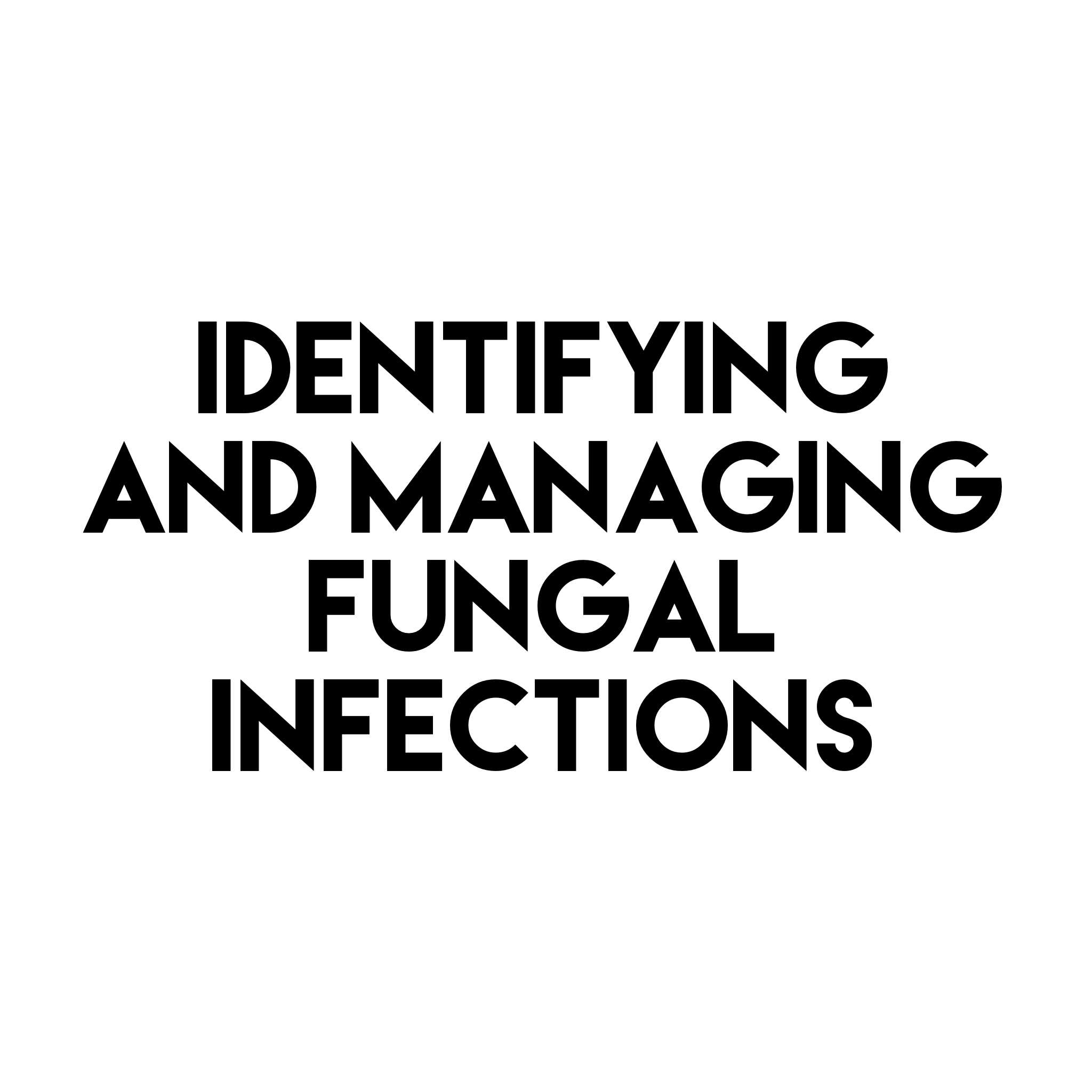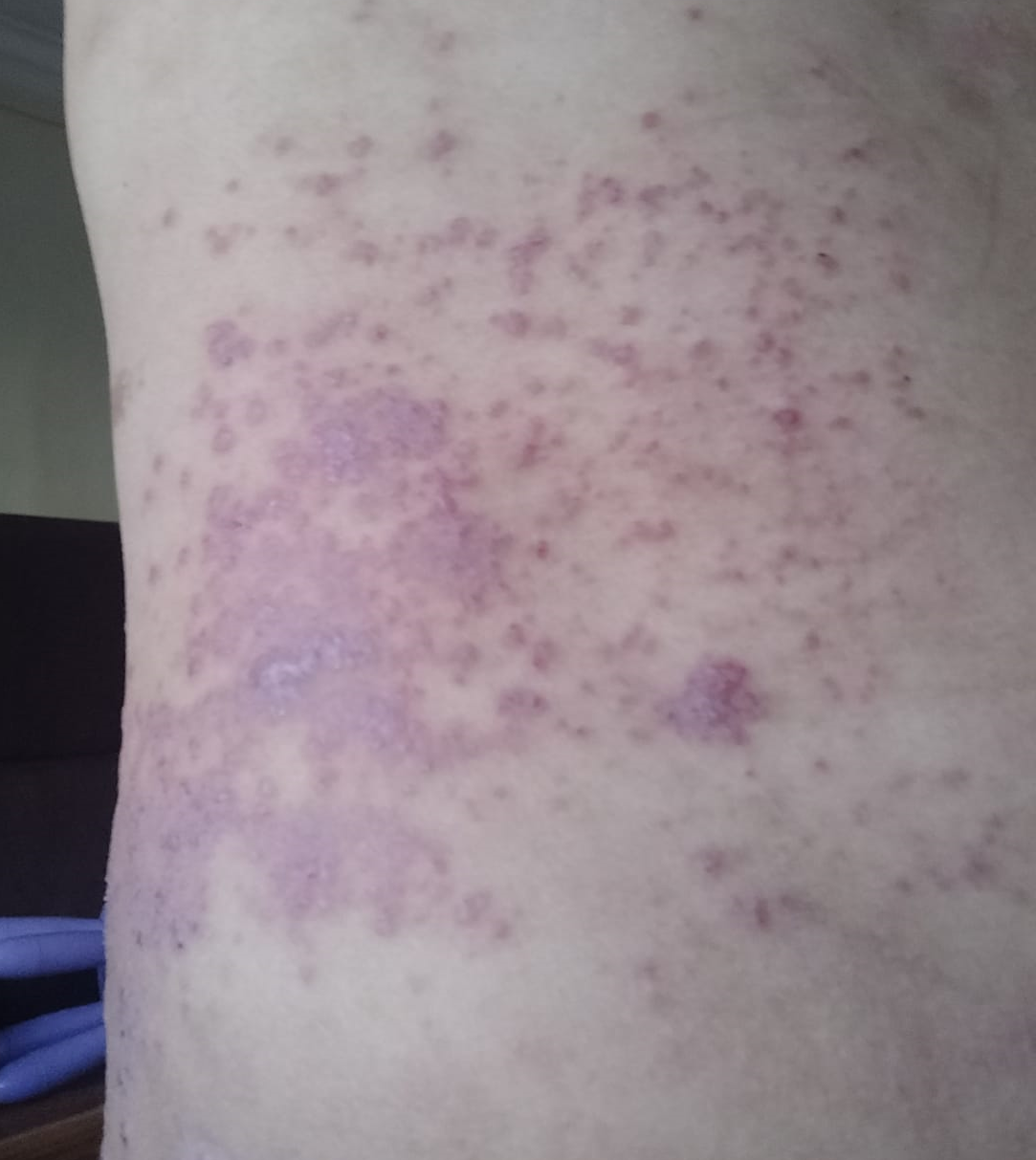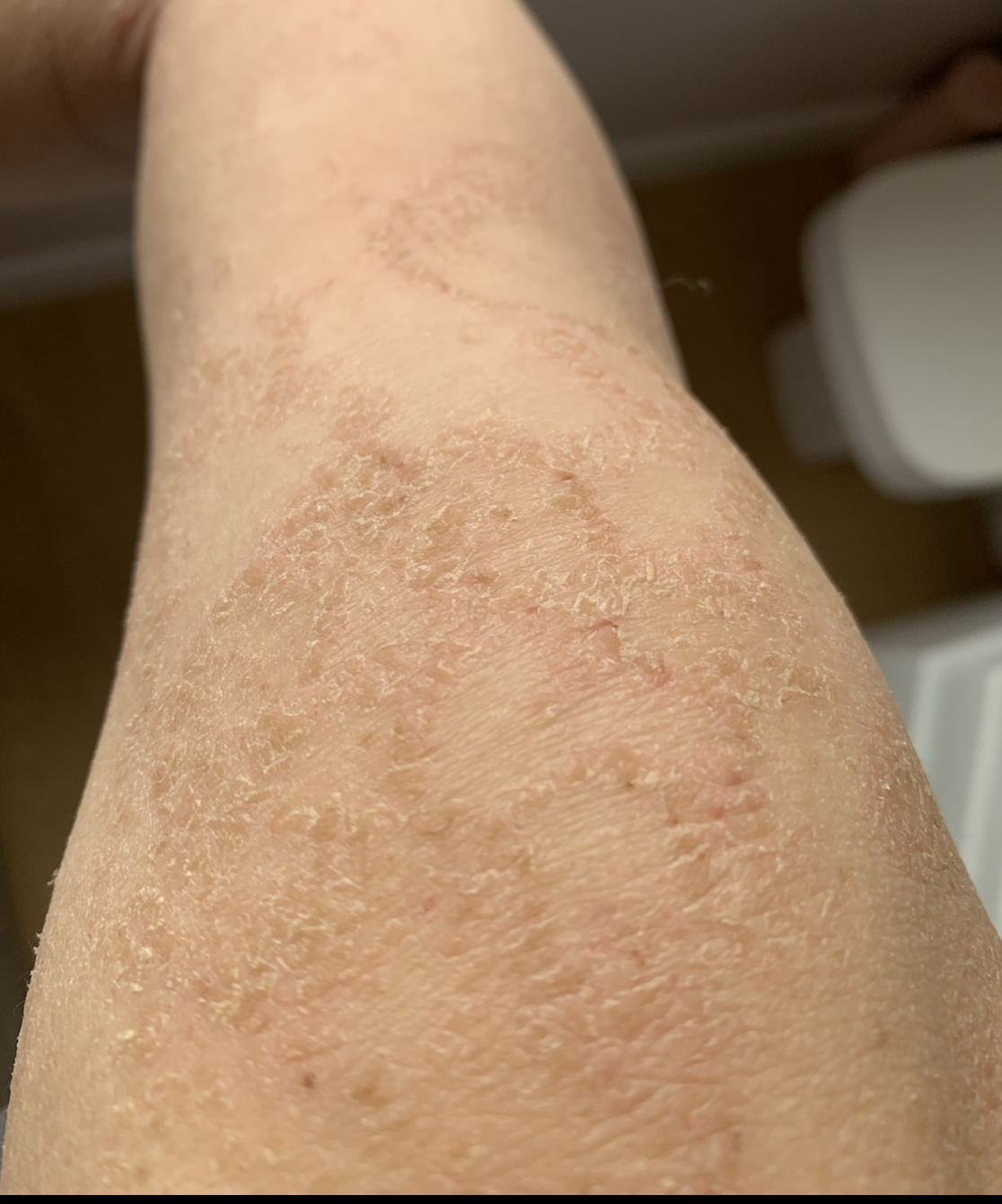Identifying and Managing Fungal Infections
What is a fungal infection?
Fungal infections are also called Mycosis; they happen when microorganisms called fungi grow on the skin. Fungal organisms are naturally in our environment and on our skin, just like bacteria. Fungal infections occur when an invading fungus takes over an area of the body and it is too much for the immune system to handle. When the skin starts to fight the fungal infection, a rash appears. This rash is usually round patches with raised ridges and defined borders and is usually very itchy.
On TSW skin, fungal infections can happen very often due to our compromised skin barrier. Reinfections also happen very easily, and the skin takes longer than normal skin to recover from a fungal infection. It can be difficult to detect a fungal infection on top of TSW, because TSW skin patterns e.g. hardened skin, oozing skin, flaking skin, can obscure fungal infection patterns. For this reason, fungal infections can become more apparent later in healing, when TSW skin is a lot better.
The life cycle of a fungal infection is 3 weeks - from spore, to teenage fungal, to adult fungal producing spores again. At all 3 stages it can look different. It is important to take fungal medication for more than 3 weeks to prevent the life cycle from starting again. Fungal medication is unable to kill spores, and it is important to kill all adult fungal before they produce new spores.
People using oral immunosuppressants are more susceptible to developing fungal infections due to the immune system being suppressed by the medication. These fungal infections are usually incognito while on oral immunosuppressants, which means that they may not be visible. The fungal infection may become visible only after coming off the medication because that is when the immune function of the skin is active again and starts to fight the fungal infection again, causing patchy skin with raised and defined borders.
There has been a rise in fungal infections as more and more people with TSW avoid showers. In people with healthy skin, fungal spores that are on the skin’s surface are washed off when they shower. If someone with healthy skin does not shower for a long time, the fungal spores start to colonise and grow and infect the skin. Those with TSW skin are no different, and in fact more vulnerable. It is recommended to shower regularly despite broken skin and pain, to prevent fungal infections.
Fungal infections can be contagious. When fungal spores are dislodged from one person’s skin to another, the fungal infection can spread. This is especially if there are any open wounds or broken skin. The infection can also spread from one body part to another when a person scratches. Scratching dislodges spores from the skin and embeds it in another area where the skin is also broken. Thus it is important not to scratch.
2. Identifying a fungal infection
There are several ways to ascertain whether you have a fungal infection:
- Skin or nail scrape: These tests are used to diagnose superficial skin or nail infections and can be done at the GP or dermatologist. Your doctor will use a special tool to take a small sample of your skin or nails.
- Swab test: This is the most common way of testing for a skin fungal infection. Your doctor will use a swab to gather tissue from an open wound
- Blood test: Used to detect the presence of fungi in the blood, usually for more serious or systemic fungal infections. Your doctor will take a blood sample, most likely from a vein in your arm.
- Visual: When the fungus has reached maturity, the pattern of the rash is easily identifiable as fungal.
Please note that fungal swabs and tests are not 100% accurate. This is because of sampling error and the nature of TSW skin. Swab tests rely on an accurate sample with live fungus on it. Once live fungus is swabbed, it is taken to the lab to be cultured. However the chances of swabbing dead fungus is high on TSW skin due to skin flaking. Thus there are many false negative test results with fungal infections on TSW skin.
Tinea Incognito
Most people with TSW have a type of fungal infection called Tinea Incognito, which looks different from the usual ringworm. This can cause confusion when trying to receive a diagnosis from the doctors.
Tinea Incognito happens when suppressive medications are applied on exising fungal infections, which stops the immune system from fighting the fungal infection. The fungal infection is given free reign to expand and starts forming ‘‘continents’’ or jagged edges, giving it an irregular shape that looks different to a typical ringworm infection.
Some irritant and allergen flares have a similar patchy pattern, and early TSW can also look very similar to a fungal infection. The key difference is that fungal infections (ringworm) are rings with a raised ridge and normal colored skin in the middle. However some different types of fungal infections can look a little different.
Here are some pictures of matured fungal infections:
Here are some pictures of healing fungal infections:
The skin becomes more flaky and scaly the tone of the patches changes. For example, it can change from red to brown as it heals. The raised patches may also start to flatten. On certain skin colors, hyperpigmentation is more likely to occur.
Healing fungal infection with hyperpigmentation on the flattened areas
Fungal infection becoming flaky and scaly, with some hyperpigmentation
Healing fungal infection
Fungal infection becoming flaky and scaly
3. Treatment Methods
Treating fungal infections in TSW can be tricky because anti-fungal medication is an irritant to TSW skin. This means that while the anti-fungal medication heals the fungal infection, it can cause a flare on your TSW skin. It is important NOT to introduce any fungal medication to the skin until it is at a stage where it is no longer flaking.
Sun and Sea Therapy
The best way to heal fungal infections on TSW skin is sun and sea therapy. Sea water has an incredible effect of killing living fungal infections. It is recommended to soak in the sea water for 30 mins. It is best to head to the sea 1 hour before sunset - this is important to avoid harsh sun. Some sun can enhance the effectiveness of the sea water in killing the infection. It would be important to do this regularly at least every 2 weeks until the skin shows no signs of fungal infection for 6 months.This method is safe to do if your skin is not inflamed and does not have open wounds. Please choose a sea that is clean and unpolluted.
Antifungal creams and pills
Antifungal medications can be helpful for those whose TSW skin is already stable and no longer flaking. They should be avoided when TSW skin is still healing.
Antifungal creams such as Daktarin (Minconazole), Canesten (Clotrimazole) can be applied topically to the affected areas. Creams are more suitable for smaller patches of fungal infections. When applied to TSW skin, it can cause a reaction because these creams are meant to kill fungal and thus are irritants to the skin. Of all fungal medications, creams are the most irritating to TSW skin as they are applied directly to the skin and usually contain moisturising ingredients e.g. paraffin.
Antifungal oral medications such as Terbinafine, Fluconazole and Itraconazole can be taken for more extensive fungal infections. These can be prescribed by your doctor or a pharmacist. It is worth noting that they are quite strong and can come with side effects e.g. heavy on the liver, however they are less irritating to TSW skin.
There are several methods of taking oral antifungal pills to balance the healing of fungal infection and healing of TSW skin. One of these methods is the Itraconazole pulsing method - Taking Itraconazole pills for 7 days on to kill the infection, then pause it for 21 days to give TSW skin a break. If you Google Itraconazole Pulsing Method, you should find articles on this method.
Normally it is advised to continue taking antifungal medication even after the fungal infection is no longer visible. This is because fungal spores can still be present on the skin even after the mature fungal infection has died out. If the medication is stopped prematurely, the fungal infection can reoccur.
3. Antifungal shampoos
Antifungal shampoos, just like topical antifungal creams, can be very irritating to TSW skin, and are used as the last resort.
Selsun Dandruff Shampoo and Nizoral Anti-Dandruff Shampoo can be used during showers as added measure to fight the fungal infection. These shampoos are applied to wet skin and massaged in to create a lather which is normally left on for 3-5 minutes before rinsing off. You may do this 3 times a week. Try to avoid getting the shampoo on open areas or bad patches of TSW skin as it can cause TSW skin to be irritated. You will notice your fungal patches becoming very dry after using the shampoos. This is to be expected - the fungal infection will die off, flake and patches will appear darker as they heal.
4. Tips and tricks for fungal infection
Wash all clothing, towels and bedding on 60 degrees or above
Change clothing daily, do not re-wear clothing especially if you have perspired during the day
Fungal infections love moist, warm environments - it is best to avoid exercise while you are healing from one
Regular cold or lukewarm showers can help remove shedding fungi spores
Some find anti-candida diets helpful
Try your best not to scratch - spores can spread and lodge themselves into broken skin with scratching. Practice mindful scratching with your fingertips instead of your nails
Patience; fungal infections can take a long time to heal
Keep the affected areas clean and dry
4. Timescales for Healing
Fungal infections can be very stubborn. On healthy skin, it can take many months to heal a full body fungal infection. On TSW skin, this can take even longer. Do not fixate on healing your fungal infection, take it a step at a time, and practice the tips religiously and consistently to see a result.













